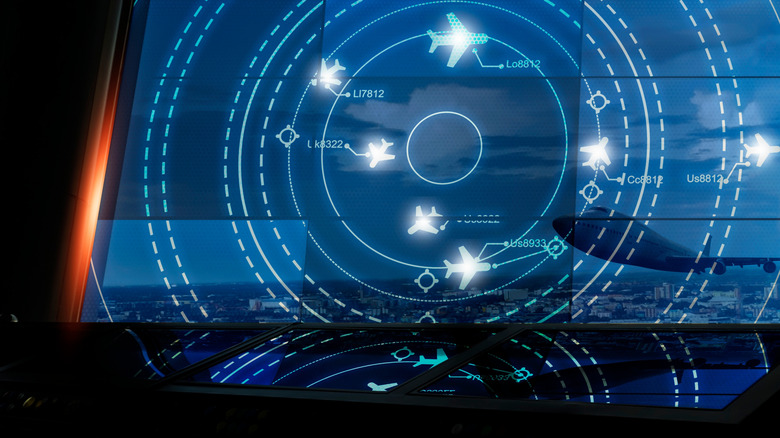
Radar, which stands for radio detection and ranging, has been around for almost as long as controlled flight. Robert Watson-Watt and Arnold Wilkins conducted the first experiments that led to a working radar system in 1935. Today, we use radar for weather forecasting, speed detection, environmental monitoring, and, of course, aviation. Radar is used by air traffic control to monitor where an aircraft is and is also used by the airplane for collision avoidance systems and navigation.
Because radar
uses radio waves, it relies on a clear line-of-sights -- the signal needs a clear path to the target, in this case a plane, and back. The curvature of the Earth and basic geography limit how we use radar. When a plane moves over the ocean and a few hundred miles from shore, the system can no longer see the plane. The signal may also be lost over remote and mountainous regions. If the plane's transponder is still working, the plane can still be tracked, but if that transponder fails, the plane can essentially disappear.
Read more: The Most Reliable Duramax Diesel Engines (And Which To Avoid) According To Owners
How Radar Works In Aviation

Commercial aviation uses two types of radar systems. Primary surveillance radar, or PSR, bounces radio waves off of objects in order to detect them. It is used to show where an object is, but cannot detect identity or altitude. Secondary surveillance radar, or SSR, uses the plane's transponder, which reports altitude, speed, and the flight number. This system is crucial when planes fly where radar coverage is limited, using satellite to report their position.
The process is remarkably simple. A transmitter relays a short but powerful burst of high-frequency radio waves. The transmitter is then shut off and a receiver is turned on, which listens for an echo from those waves. Because we know how fast radio waves travel, the distance of the plane can be measured from that echo. The process can also ascertain the speed of a plane by measuring the Doppler effect.
Radar is not only limited by terrain and line of sight, but weather. Pilots use radar to detect and avoid bad weather because, in addition to causing turbulence, heavy rain can scatter or weaken radar signals. Additionally, technical issues on the ground are rare but can happen, such as the telecommunications outage at Newark Liberty International Airport, which affected its radar system.
How Many Modern Planes Have Disappeared?

Radar may be almost 100 years old, but the technology we use today is reliable, and it's difficult for a plane to simply disappear. A plane's transponder ensures that even when it flies beyond sight of the radar system, it can still be tracked.
In 2014, however, Malaysia Airlines Flight MH370 did just that. We ranked this incident as one of the 10 worst aviation disasters. The Boeing 777-200ER was carrying 239 people when it took off from Kuala Lumpur, Malaysia enroute to Beijing, China when it disappeared off of civilian radar. Military radar indicated that plane veered off course, and the transponder signal was also lost. Despite an exhaustive search, no main wreckage was found, though pieces of debris thought to have come from the plane were later recovered on various islands. A report from the Malaysian government eliminated mechanical or computer failure, indicating that the transponder must have been deliberately turned off.
The Malaysia Airlines flight is the only modern example of a plane disappearing from radar and never being found. You may recall that In July 2025, an Antonov An-24 passenger plane disappeared off of radar in Russia, but the wreckage was found shortly thereafter. Most other cases of missing passenger planes that have never been located date back to the 1950s and 1960s or before, and technology has since come a long way.
Want the latest in tech and auto trends? Subscribe to our free newsletter for the latest headlines, expert guides, and how-to tips, one email at a time.
Read the original article on SlashGear.












